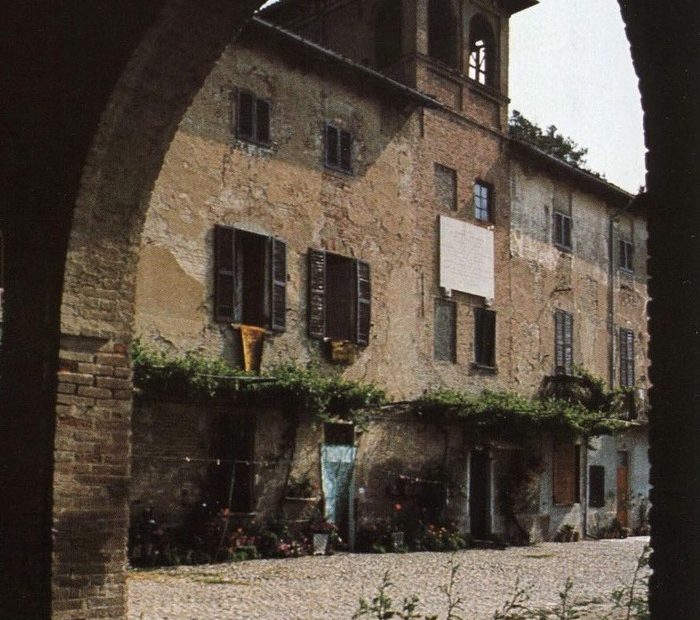The trail from the seasonal cycle provides the pearls to convey our identity from ancestors to posterity and rebuild, thus, the endless story spread on the street alias the best school to know the native site. The name Marengo projected on the European set by the military triumph of Napoleon is defined by the rather ordinary genesis attributed to the sea. The name comes from the distance of four roads Marencane (or Marenche) built from the Middle Ages to connect the sea to the Trans-Apennine hinterland: Albenga to Mondovì, Oneglia to the Vermenagna valley and Cuneo, Genoa to the segment from Tortona to Casteggio and the city of Pavia, Voltri to the plain of Alessandria and the hills of Monferrato from Asti to Casale (two cities then richer than Turin). The straight strip from Liguria to Pozzolo Formigaro dates back to the Napoleonic era and replaces the winding road strewn with farmhouses surrounded by walls and defined by the watchtower. The stretch from Genoa to Marengo crossed the Castel Gazzo Tower lapped by the Lovassina river to enter the Marencana road now reduced to the connection from the Padana Inferiore state road to Viale Partigiani on the territory of Pozzolo and the Brencia farmhouse lying on the plateau of Fraschéta stretched from Alexandria to Bosco.
The glory on the countryside of Marengo exists from the Lombard era along with the mansio alias the post and exchange station for horses incorporated into the fortified farm: from the tower Teodolinda in Marengo to the tower Garofoli in Tortona, from the Torre di Frugarolo estate to the collapsed farmhouses equipped with a protection tower (from the Masina tower fifteen meters high and removed from the collapse to the Posta tower near Mandrogne and Quattro Cascine). The chatter attributes to the tower-shaped building inserted in the farmhouse of Via Desaix in Castelceriolo the origin for the appellation combined with the estate softened by the noble family Mathis (cadet branch of Ghilini lineage). The charm fused to the architectural structure defined by the ascension to expand the visual area can be extended to the bell tower. The eighteenth century and the site of Catholic worship newborn and dedicated to Our Lady of the Rosary replaced the church of San Giuliano Martire burnt by the pyre (25 February 1700) and started the geographical redesign to the village of San Giuliano della Frasca on the territory extended by the Garofoli tower to the Teodolinda tower already engraved by the Roman centurial grid. Today the area of San Giuliano Nuovo defined by the eighteenth-century church and the baroque bell tower financed by the marquis Fabrizio Ghilini IV (1665 – 1745) the area of San Giuliano Vecchio identified by the most recent sacred building consecrated to the Blessed Virgin Assumption to Heaven and the square base to the bell tower as well as the stele laid at the farm Holy Vineyard to commemorate the Napoleonic General Louis Charles Desaix here fallen at the Battle of Marengo (14 June 1800).
